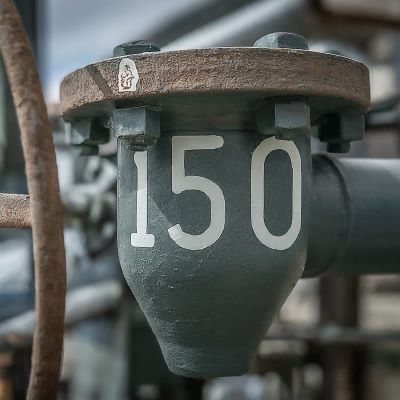In the intricate world of industrial applications, pressure reigns supreme. 150 ANSI pressure rating is a common standard. It serves as a guiding light for engineers. It also helps procurement specialists and maintenance personnel.
But what exactly does this number mean, and where does it fit in the grand scheme of things? Let’s delve deeper.
ANSI Pressure Overview
ANSI, the American National Standards Institute, is essential. It establishes pressure rating standards for various components. This ensures safety and reliability across industries. The 150, in this case, refers to its class designation, indicating the maximum allowable pressure at ambient temperature (68°F).
But remember, it’s not just about pressure. Different symbols and designations within the ANSI system specify the type of component. For example, flanges and fittings have their own symbols. They also indicate the relevant standards.
Crucially, pressure rating is closely linked to temperature rating. As temperatures rise, pressure limitations decrease, requiring derating factors to ensure component integrity. Material selection plays a key role. Cast iron and carbon steel are commonly used for 150 ANSI components.
What can a 150 ANSI Component Handle?
Typically, it can withstand a maximum pressure of 150 pounds per square inch (psi) at ambient temperature. But as temperatures climb, that limit gradually reduces.
For instance, at 400°F, the allowable pressure drops to around 180 psi. 150 ANSI components are commonly used in water lines, air systems, and low-pressure chemical processes. They are also used in general-purpose industrial applications.
Choosing Wisely: 150 ANSI
When selecting 150 ANSI components, factors of consideration are important. This includes:
➡️ Pressure requirements,
➡️ Operating temperature,
➡️ Fluid compatibility, and
➡️ Relevant safety regulations.
Remember, exceeding a component’s pressure rating can lead to catastrophic failures. Consulting with engineers or technical experts are the best moves.
Check out these other resources ⬇️⬇️⬇️
Advantages and Limitations of 150 ANSI Rating
Embracing the 150 ANSI pressure rating comes with numerous advantages including:
➡️ Affordability,
➡️ Widespread availability, and
➡️ Suitability for diverse applications.
However, it’s essential to acknowledge the limitations inherent in 150 ANSI components. While they excel in many scenarios, 150 ANSI components have their boundaries. Pressure and temperature restrictions may limit their applicability in high-pressure or high-temperature environments.
Additionally, compatibility issues with certain fluids underscore the importance of thorough consideration and assessment before implementation.
The Final Word
The 150 ANSI pressure rating serves as a vital benchmark in the industrial landscape. By understanding its characteristics, advantages, limitations, and selection considerations, we can ensure the safe and reliable operation of our systems.
Remember, venturing beyond the basics unlocks a world of advanced insights. It empowers informed decisions and optimal performance. So, let the exploration continue, and keep the pressure under control!
Post time: Mar-15-2024


